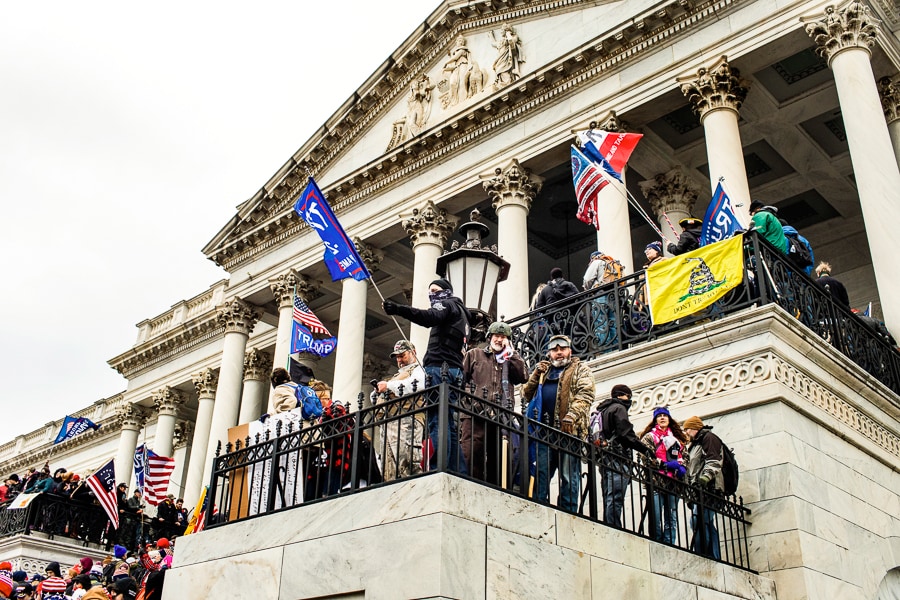
White House call logs underscore Trump's efforts to sway lawmakers on Jan 6
As part of his frenzied attempt to cling to power, now former President Donald Trump reached out repeatedly to members of Congress on January 6, 2021, both before and during the siege of the Capitol, according to White House call logs and evidence gathered by the House committee investigating the attack
 A mob of supporters of then-President Donald Trump attacks the Capitol in Washington on Jan. 6, 2021. Federal prosecutors and congressional investigators are documenting how the former president’s “Be there, will be wild!” tweet became a catalyst for militants before the Capitol assault. (Jason Andrew/The New York Times)
A mob of supporters of then-President Donald Trump attacks the Capitol in Washington on Jan. 6, 2021. Federal prosecutors and congressional investigators are documenting how the former president’s “Be there, will be wild!” tweet became a catalyst for militants before the Capitol assault. (Jason Andrew/The New York Times)
WASHINGTON — As part of his frenzied attempt to cling to power, President Donald Trump reached out repeatedly to members of Congress on Jan. 6, 2021, both before and during the siege of the Capitol, according to White House call logs and evidence gathered by the House committee investigating the attack.
The logs, reported earlier by The Washington Post and CBS and authenticated by The New York Times, indicated that Trump had called Republican members of Congress, including Sen. Mitch McConnell of Kentucky, Sen. Josh Hawley of Missouri and Rep. Jim Jordan of Ohio, as he sought to pressure Vice President Mike Pence to reject electoral votes from several states.
But the logs also have a large gap with no record of calls by Trump from critical hours when investigators know that he was making them. The call logs were among documents turned over by the National Archives to the House committee examining the attack last year on the Capitol.
The New York Times reported last month that the committee had discovered gaps in official White House telephone logs from the day of the riot. The Washington Post and CBS reported Tuesday that a gap in the phone logs amounted to 7 hours and 37 minutes, including the period when the building was being assaulted.
Investigators have not uncovered evidence that any of the call logs were tampered with or deleted. It is well known that Trump routinely used his personal cellphone, and those of his aides, to talk with other aides, congressional allies and outside confidants, bypassing the normal channels of presidential communication and possibly explaining why the calls were not logged.
©2019 New York Times News Service







